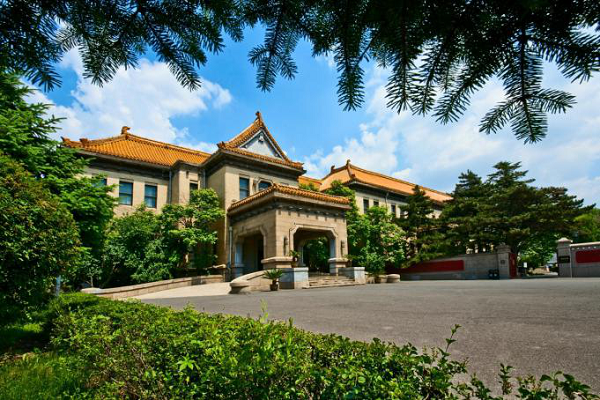Museum of the Imperial Palace of 'Manchukuo'
Museum of the Imperial Palace of "Manchukuo"
伪满皇宫博物院
Address: 5 North Guangfu Road, Kuancheng district, Changchun, Jilin province
Website: www.wmhg.com.cn (Cn)
Hours: 8:30 - 17:20 (1 May - 30 Sept, entry until 16:10) 8:30 - 16:50 (1 Oct - 30 April, entry until 15:40)
General admission: 70 yuan
 |
| [Photo/wmhg.com.cn] |
The tumultuous life of Pu Yi, the last emperor of China, has been told in modern fictions, high school textbooks, and Hollywood films. It was during his reign that China's last imperial dynasty met its doom. The emperor saw himself as better and above the average person, and his sense of entitlement and view of reality was so perverted that he did everything possible to retain the glory of an empire, and later became a pawn and a puppet from the day he was installed as the ruler of the so-called State of Manchukuo and entered the Imperial Palace of "Manchukuo", powerless to act helpless to control his own destiny.
Located at No 3 Guangfu Road in the northeast corner of Changchun city in Jilin province, the Museum of the Imperial Palace of "Manchukuo" was where the monarch lived and held court under the direction of the Japanese.
It is surrounded by black palace walls enclosing an area of 12 hectares. The series of buildings erecting inside the palace, blending Chinese classical, European, and Japanese styles, including the Qinmin Building, Jixi Building and the Tongde Hall, are the most renowned parts of the museum.
The palace can be divided into two parts: inner court and outer court. The inner court was the living quarters of Pu Yi and his concubines. The outer court was where Pu Yi dealt with state affairs. The palace comprises residential area and office buildings, man-made landscape, recreational space including a swimming pool, a racket court, a golf course, and a hippodrome, air-raid shelters, a storehouse of books and paintings, and other auxiliary facilities.
The Tongde Hall, built during the period from 1936 to 1938, is the largest building in the puppet palace constructed under the supervision of Japanese engineers. Its interior is lavishly decorated. To the north of the Tongde Hall is an obscure two-storey cement building dubbed as "The little white building" (Xiaobai lou). The unadorned building was built in the 1936 to accommodate over 1,000 artworks, rare books, and traditional Chinese paintings and calligraphy transferred furtively out of the Forbidden City by Pu Yi since the 1920s, when he had abdicated from the throne but still lived in the rear section of the Forbidden City enjoying certain benefits from the republic government. In early 1930s, the paintings and calligraphy were shipped here where he ascended the throne as emperor of the "Manchukuo", and had been stored here for more than a decade. In August 1945, the Soviet Union waged war against Japan and the Manchukuo collapsed, Changchun was abandoned and Pu Yi fled in panic. He took with him a selected part of the Forbidden City treasures to the coal-mine town Dalizigou, Tonghua where he hoped to flee to Japan via Shenyang but wound up caught by the Soviet Red Army in Shenyang airport. It is from this little white building that the treasure was parted and relocated again. The rest that was deposited in Dalizigou was looted or even destroyed, lost with no one knows the whereabouts.
